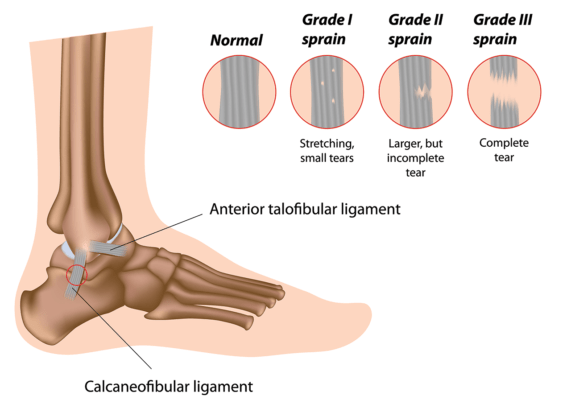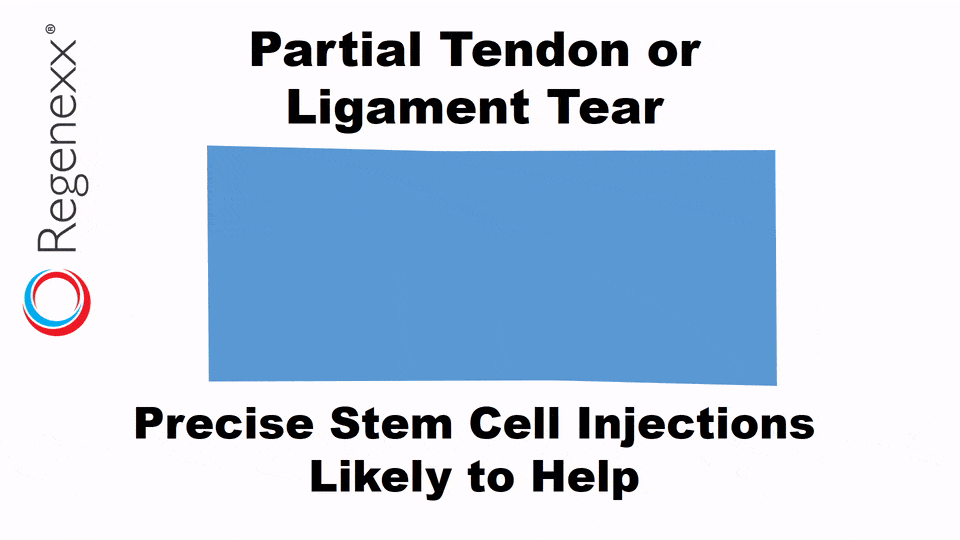Is Playing on a Sprained Ankle Safe?
On this page:
- What is an ankle sprain?
- What is joint instability?
- What happens if you play on a sprained ankle?
- How can a doctor tell if you have an unstable ankle?
- How can you treat these lax ankle ligaments?
I can’t tell you how many trashed ankles we have seen through the years because the patient was playing on a sprained ankle. Kids or adults are often checked out and cleared by an orthopedic surgeon who hasn’t been trained to recognize what’s called sub failure instability.
So how can you make sure that this doesn’t happen to you? If you’ve had an ankle sprain and your joint now feels fine, you may be setting yourself up for a lifetime of ankle problems without really knowing that there’s anything wrong.
What Is an Ankle Sprain?

Alila Medical Media/Shutterstock
The ankle joints are surrounded by tough ligaments that hold the joint together and allow only certain types of defined movements. When those ligaments get stretched or torn, the ankle is called sprained. If it heals within the first few weeks, then not much more attention is paid to the problem. If it doesn’t, usually an MRI is taken to see if the ligaments are completely torn in half. If they are, then surgery can be performed.
What Is Joint Instability?
Joint instability happens when the ligaments that hold together a joint get loose. This means that the joint surfaces move around too much, and this cumulative wear and tear can lead to arthritis (1). This extra motion occurs because ligaments get stretched out or have partial tears. This extra motion and the damage that it causes is what can happen when you play on a sprained ankle.
Regrettably, our orthopedic surgical care system is only adept at identifying complete or complete retracted tears of ligaments. While these lesser tears may be slowly frying the ankle joint, they are frequently ignored. Below are animated GIFs that show the difference in the types of the three ligament tears:
Your surgeon is only trained to identify a complete and retracted tear, but if you have a partial or complete non-retracted tear, your ankle joint is at significant risk if you return to play.
What Happens if You Play on a Sprained Ankle?
Dr. Schultz just examined a 23-year-old female, ex-college-soccer star who was playing on a sprained ankle. She had a four-year history of ankle pain.
She had continued to play with intermittent pain after an ankle sprain and needed five steroid injections to keep going. She thought everything was OK, but then arthritis began to manifest. She had one arthroscopic ankle surgery, which failed. Her MRI now shows a rapidly deteriorating main ankle joint that looks like a 60-year-old joint!
Could all of this have been prevented? Yes, she has always had ankle laxity, which was never recognized or treated by her surgeon. So for years, while she’s been covering up her instability with steroid shots to keep the ankle feeling fine, she’s been frying the joint!
How Can a Doctor Tell if You Have an Unstable Ankle?
You’re probably thinking right now, My ankle doesn’t hurt anymore, so I’m fine. However, that’s not the case if the ligaments are loose.
Why? If you’re young, your body can keep up with the extra wear and tear, but once you hit your late twenties or early thirties and that ability to repair the joint declines, many people playing on old ankle sprains find out the hard way that arthritis comes knocking!
So if you’ve sprained your ankle, how can you tell if you should be playing on a sprained ankle? A quick few minutes exam by an orthopedic surgeon isn’t enough to tell if you have this problem. The best way to rule it out is to use stress ultrasound. What’s that? See the video above to learn more.
How Can You Treat These Lax Ankle Ligaments?
Most damaged ankle ligaments can be easily treated through precise injections, which is the frustrating part. This isn’t with steroids, which kill local cells, but with regenerative medicine solutions, like platelet rich plasma (PRP) or stem cells (2,3).
Even simpler treatments, like prolotherapy, which injects a substance to cause a brief inflammatory healing reaction can help heal these problems. Once the ligaments are healed, you should be fine to play on the ankle.
The upshot? Playing on a sprained ankle that feels fine is a prescription for disaster. So make sure you get your ankle checked with stress ultrasound after a sprain!
_____________________________________________
References
(1) Gehring D, Faschian K, Lauber B, Lohrer H, Nauck T, Gollhofer A. Mechanical instability destabilises the ankle joint directly in the ankle-sprain mechanism. Br J Sports Med. 2014;48(5):377-382. doi:10.1136/bjsports-2013-092626
(2) Pihlajamäki H, Hietaniemi K, Paavola M, Visuri T, Mattila VM. Surgical versus functional treatment for acute ruptures of the lateral ligament complex of the ankle in young men: a randomized controlled trial. J Bone Joint Surg Am. 2010;92(14):2367-2374. doi:10.2106/JBJS.I.01176
(3) Alsousou J, Thompson M, Hulley P, Noble A, Willett K.. The biology of platelet-rich plasma and its application in trauma and orthopaedic surgery. J Bone Joint Surg Br. 2009 Aug;91(8):987-96. doi:10.1302/0301-620X.91B8.22546

NOTE: This blog post provides general information to help the reader better understand regenerative medicine, musculoskeletal health, and related subjects. All content provided in this blog, website, or any linked materials, including text, graphics, images, patient profiles, outcomes, and information, are not intended and should not be considered or used as a substitute for medical advice, diagnosis, or treatment. Please always consult with a professional and certified healthcare provider to discuss if a treatment is right for you.



